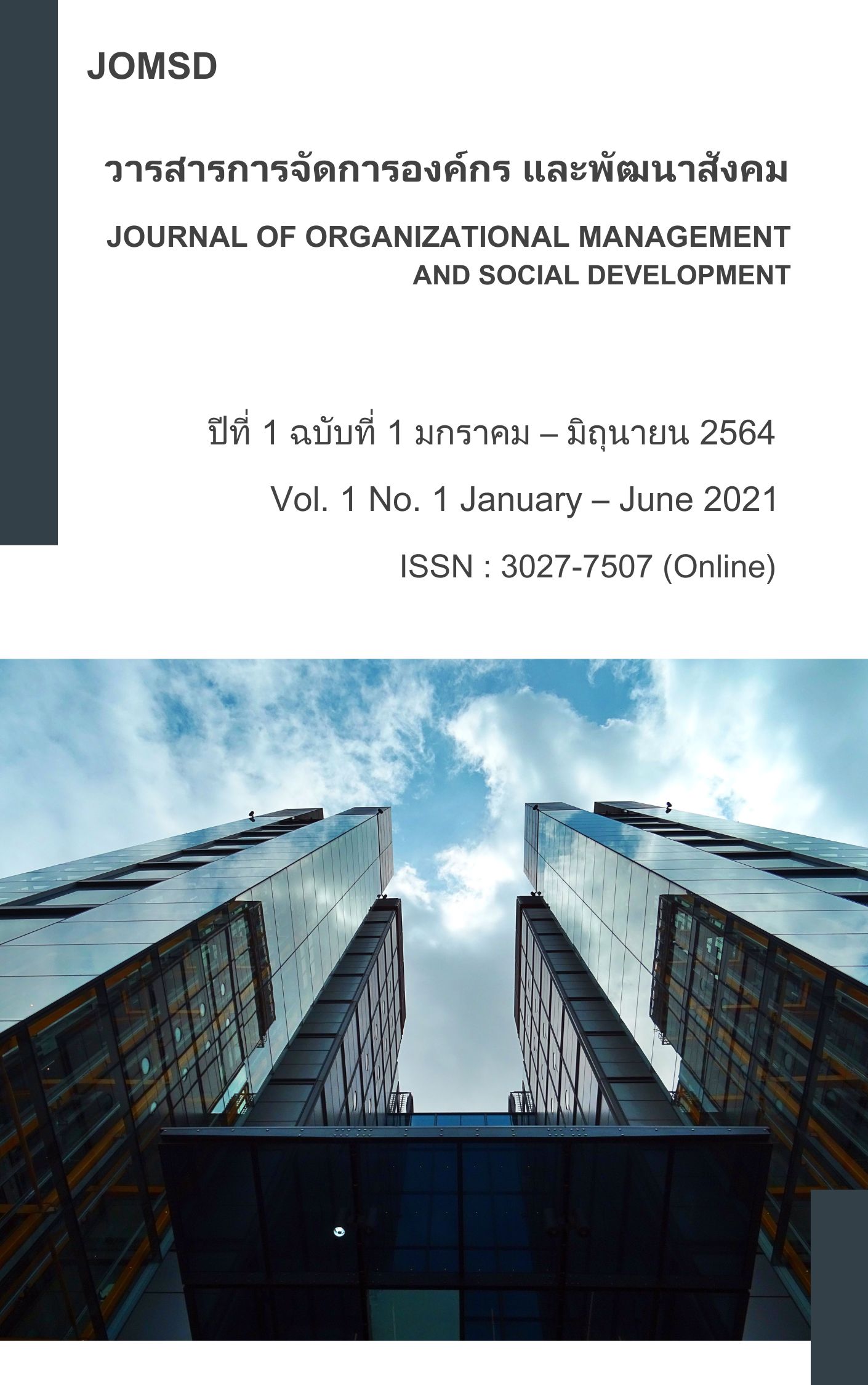Developing Learning Achievement on Khandha 5 Using Ready-Made Lessons of Students in Grade 5 at Nong Tong School “Surawittayakhom”, Academic Year 2020
Main Article Content
Abstract
The purpose of this research is to study 1) the efficiency of the teaching and learning process on Khandha 5 using ready-made lessons. of 5th grade students, 2) to study the learning achievement before and after learning about Khandha 5 using ready-made lessons. of Grade 5 students at Nong Tong School “Sura Wittayakhom”. The sample group in this research included 34 Grade 5 students from Nong Tong School “Sura Wittayakhom”, obtained through a purposive method. The tools used in this study included 4 learning plans and a 20-question test. Statistics used included finding percentages and averages. The research results were found: 1) From the research study, it was found that the efficiency of the teaching and learning process on the 5 Khandhas using ready-made lessons. of Grade 5 students at Nong Tong School “Sura Wittayakhom” compared to the standard criteria, it appears that the efficiency is 81.88 /84.26, which is higher than the standard efficiency criteria set, which is (E1/ E2) 80/80. 2) Results of analysis of scores comparing learning achievement before studying and after studying Khan 5 using ready-made lessons. of Grade 5 students at Nong Tong School “Sura Wittayakhom” with a pre-test of 20 questions with an average of 23.53 and after learning management, a post-test of 20 questions with an average of 42.13 which was concluded. Academic achievement after studying was higher than before studying: 23.53 /42.13.
Article Details
References
กระทรวงศึกษาธิการ. (2553). พระราชบัญญัติการศึกษาแห่งชาติ พ.ศ. 2542 และที่แก้ไขเพิ่มเติม (ฉบับที่ 2 พ.ศ. 2545) และ (ฉบับที่ 3 พ.ศ. 2553). กรุงเทพฯ: โรงพิมพ์องค์การรับส่งสินค้าและพัสดุภัณฑ์.
นิชา สีพรมทอง. (2558). ผลสัมฤทธิ์ทางการเรียนของนักเรียนชั้นมัธยมศึกษาปีที่ 4 เรื่อง ยีนและโครโมโซม ที่เรียนโดยใช้บทเรียนสำเร็จรูป และแบบสืบเสาะหาความรู้. วารสารบัณฑิตศึกษา, 12(58), 119-126.
เปรื่อง กุมุท. (2527). คู่มือการเขียนบทเรียนสำเร็จรูป. (พิมพ์ครั้งที่ 2). กรุงเทพฯ: ภาควิชาเทคโนโลยีทางการศึกษา มหาวิทยาลัยศรีนครินทรวิโรฒประสานมิตร.
พระวัชระ เทวสิรินาโค (เลขาลักษณ์), บุญเชิด ชำนิศาสตร์ และระวิง เรืองสังข์. (2563).รูปแบบการจัดการศึกษาของศูนย์ศึกษาพระพุทธศาสนาวันอาทิตย์. วารสารสังคมศาสตร์และวัฒนธรรม, 4(2), 1-11.
ศุภลักษณ์ ทองจีน, ชลาทิพย์ ชัยโคตร, ณัฐพล บุญจำนงค์, เชิดชัย หมื่นภักดี และปกรณ์ศักดิ์ มงคลเคหา. (2562). การพัฒนากิจกรรมการเรียนการสอนรายวิชาภาษาไทยของนักเรียน ชั้นประถมศึกษาปีที่ 3 โรงเรียนตำรวจตระเวนชายแดน จังหวัดบึงกาฬ โดยใช้บทเรียนสำเร็จรูป. ศึกษาศาสตร์ มมร, 7(2), 539-553.
สุวิทย์ มูลคำ. (2553). 20 วิธีการเรียนรู้ : เพื่อพัฒนาคุณธรรม จริยธรรม ค่านิยม และการเรียนรู้โดยการแสวงหาความรู้ด้วยตนเอง. (พิมพ์ครั้งที่ 9). กรุงเทพฯ: ภาพพิมพ์.
อัจฉรา ชื่นใจ. (2563). การพัฒนาทักษะการใช้ไวยากรณ์ความสอดคล้องโครงสร้างโดยใช้บทเรียนสำเร็จรูปในรายวิชาภาษาอังกฤษของนักเรียนชั้นมัธยมศึกษาปีที่ 4. วารสารมหาวิทยาลัยราชภัฏลำปาง, 9(2), 124-134.

